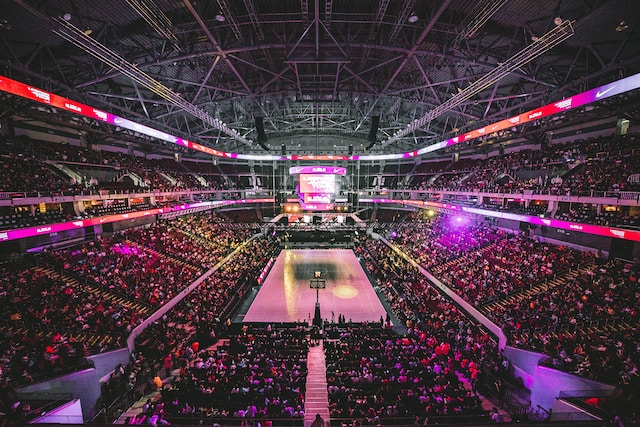Holding a key position in the global commerce sphere, the apparel industry stands as a significant force. Its status was further emphasized when the revenue of the global apparel market was calculated to amount to a staggering $1.53 trillion in 2022.
The apparel industry, traditionally a fundamental pillar of the economy, has undergone considerable changes, catalyzed by the unstoppable march of technology. In a world where technology deeply permeates our daily lives, its impact on the apparel industry is truly significant. It has revolutionized age-old production methods and streamlined distribution networks while entirely transforming how consumers engage with and consume fashion.
Historical Context
Looking back, the apparel industry was known for its labor-intensive, hands-on processes where clothing items were considered luxuries, tailored, and crafted to meet the unique requirements of each individual. Still, as technology advanced, creeping into every industrial nook, mechanization began to replace manual labor. From spinning wheels to power looms and from the humble needle to the invention of the sewing machine, the fashion industry witnessed a seismic shift, resulting in increased mass production and reduced costs.
Technological Innovations in the Apparel Industry
Within the cutting-edge landscape of today’s apparel industry, technological innovations are advancing at an unprecedented rate. A particularly game-changing innovation is the apparel enterprise resource planning (ERP) system. These powerful software solutions are designed to streamline operations, effectively becoming the digital backbone of any modern fashion business.
ERP systems for the apparel industry encompass an array of functionalities that optimize processes and boost efficiency. These systems present all-encompassing solutions that oversee an array of operations, from managing the product lifecycle and supply chain to handling sales and fostering customer relationships. More importantly, these systems harness real-time data and analytics, empowering apparel businesses to make quick, precise, and well-informed decisions.
By integrating various business processes into a single, unified system, the best apparel ERP eliminates data silos and enhances communication across different departments. It facilitates quick adaptation to evolving fashion trends and market demands, fostering greater agility and responsiveness. Whether it’s tracking inventory, managing orders, or analyzing sales data, ERP systems have empowered apparel businesses to operate more strategically and effectively, marking a significant stride in the industry’s technological evolution.
The Impact of Technology on Supply Chain and Manufacturing
The technological revolution is not limited to the consumer end of the spectrum but has permeated even the realms of supply chain management and manufacturing. Automation and robotics, once concepts of science fiction, are now mainstream, deployed in tasks like fabric cutting and sewing, optimizing productivity, and minimizing errors. AI has now assumed a central role in supply chain management, offering predictive analysis for efficient demand forecasting and proactive identification of potential disruptions.
The Influence of Technology on Marketing and Sales

The impact of technology on the apparel industry has revolutionized traditional marketing and sales strategies. Traditional advertising channels are giving way to direct, interactive platforms like social media, influencer marketing, and digital advertising.
Social media platforms have become pivotal marketing spaces, enabling real-time engagement with customers. Influencer marketing leverages the extensive reach of social media personalities, effectively swaying consumer preferences and buying decisions. Digital advertising allows for targeted outreach, resulting in better conversion rates. Simultaneously, data analytics and artificial intelligence (AI) have ushered in a new era of personalized marketing.
By analyzing customer behaviors and preferences, these technologies enable tailored recommendations, enhancing customer engagement and transforming the shopping experience. In sum, technology has taken apparel marketing from a general approach to a personalized, data-driven strategy.
The Future of Technology in the Apparel Industry
As we cast our eyes toward the horizon, it’s clear that the technological metamorphosis sweeping across the apparel industry is not only persistent but accelerating. The advent of smart textiles, a prime example of the industry’s innovative spirit, has started to revolutionize the very fabric of fashion. These textiles incorporate technology to offer additional functions, such as health monitoring or temperature regulation, broadening the scope of what apparel can be.
Blockchain technology is another burgeoning trend that holds immense potential. It promises to infuse an unprecedented level of transparency and traceability into supply chains, which could drastically alter the landscape of ethical and sustainable fashion. This technology empowers consumers with information about the origins and journey of their clothing, thereby promoting responsible consumption.
Moreover, technology is poised to be a guiding force for the apparel industry. It offers the tools to deal with evolving challenges and norms, from maintaining efficient remote working environments to responding swiftly to shifting consumer behaviors. The synergy between the apparel industry and technology is undoubtedly steering the sector toward a future marked by greater resilience, sustainability, and innovation in fashion.
Conclusion
To conclude, the profound and expansive impact of technology on the apparel industry is truly transformative. It has revolutionized not only the manufacturing processes but also radically altered the customer shopping experience, molding the face of fashion in ways we could never have anticipated. The transformative power of technology propels the industry toward improved efficiency, heightened sustainability, and more immersive customer engagement.







